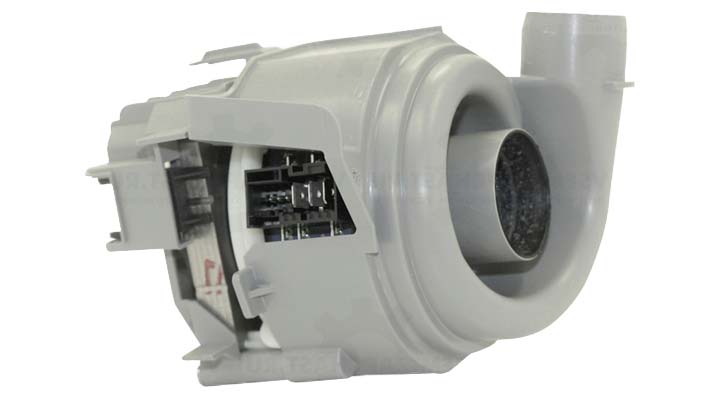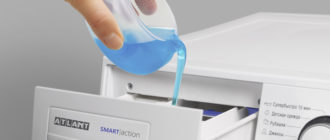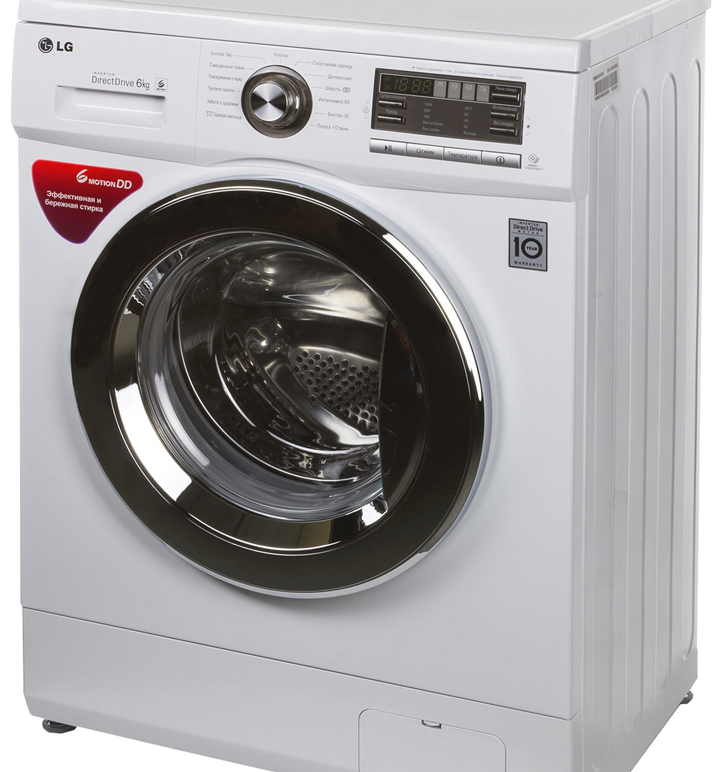 The device of the automatic washing machine pump and working features not every buyer knows, while no one knows that the pump is considered one of the main and important elements of the entire washing construction.
The device of the automatic washing machine pump and working features not every buyer knows, while no one knows that the pump is considered one of the main and important elements of the entire washing construction.
We will help you to understand what such pumps consist of, their varieties, as well as differences in performance and maintenance.
Principle of operation of the washing machine pump and pump
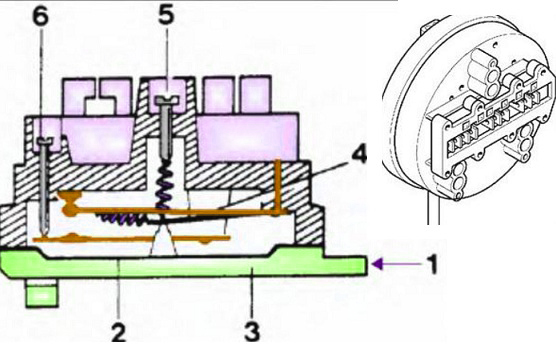 Nowadays all commercially available washing machines automatic washing machines automatic type washing machines, the water comes by itself, that is, under pressure from the faucet, to which the construction is connected.
Nowadays all commercially available washing machines automatic washing machines automatic type washing machines, the water comes by itself, that is, under pressure from the faucet, to which the construction is connected.
When the owner selects a certain command from the programs provided by the machine, a special magnetic valve, which lets water in, opens to let the necessary amount of water into the drum.
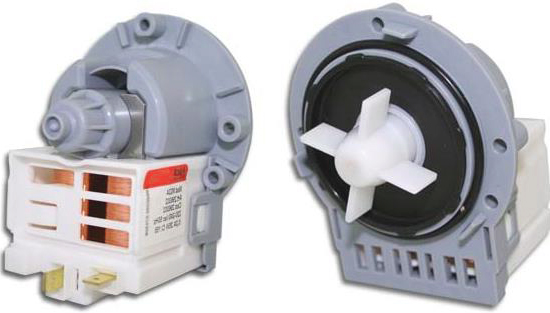 Once water has entered the washing machine, it passes all the latches with washing agents, mixed on the way, and then enters the drum, during the whole process of washing water will be in it.
Once water has entered the washing machine, it passes all the latches with washing agents, mixed on the way, and then enters the drum, during the whole process of washing water will be in it.
After the washing is done, all this used water goes into the pump through a special hose.
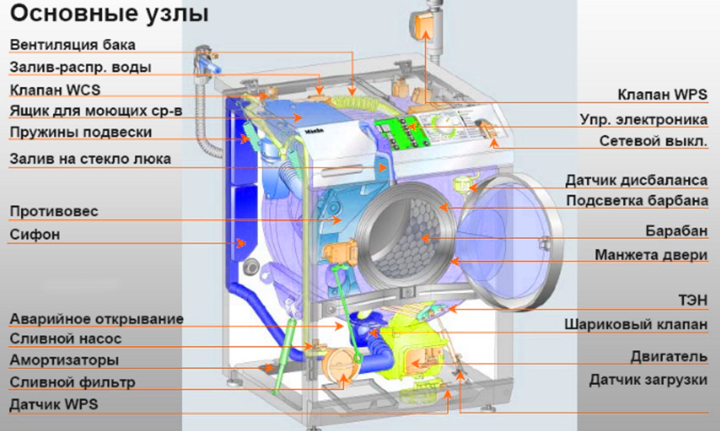 The pump in tandem with the pump begins to pump out the used water from the drum to the hole in the sewer through the drain hose, this process begins after a special signal from the washing machine system and will continue until the water completely disappears from the tank.
The pump in tandem with the pump begins to pump out the used water from the drum to the hole in the sewer through the drain hose, this process begins after a special signal from the washing machine system and will continue until the water completely disappears from the tank.
Exactly the same process will occur in the rinse mode, however, without a variety of laundry detergents and various conditioners. The spin mode occurs with the same participation of the pump and the pump.
Device of the pump
The pump of the washing machine is called an asynchronous motor of small power, which is equipped with a magnetic rotor, the speed of rotation is about 3000 rpm.
Modern high-end CIPs have only two types of pumps:
- Drain pumps;
- Circular;
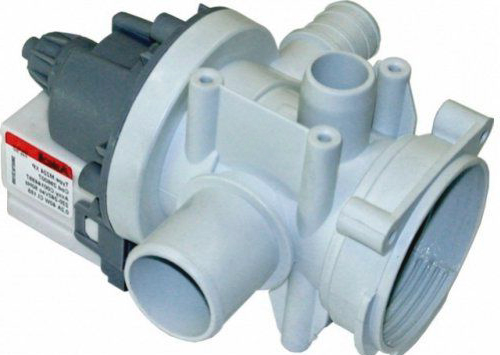 Drain pumps pump dirty water after the washing process, circular pumps are responsible for water circulation in wash and rinse modes. Other less expensive machines have only drain pumps.
Drain pumps pump dirty water after the washing process, circular pumps are responsible for water circulation in wash and rinse modes. Other less expensive machines have only drain pumps.
The rotor of the pump (drain pump) is somewhat similar to a magnet of cylindrical design.
The blades (which are fixed to the rotor axis) are deployed at an angle of 180 degrees to it.
When the drainage device is started, the rotor is the first to go into action, after which the blades begin to rotate. The core of the motor is equipped with two windings, which are connected to each other. Their resistance together is about 200 ohms.
If you bring up the conversation about the washing machines of low power, their external connector will always be located in the middle of the case. It has special valves (rubber ones) of reverse action, which do not give water a chance to get into the tray of the washing machine automatic from the drain tube.
Under the pressure of the liquid, the valve opens, and when the pressure from the water supply stops, it immediately closes the valve.
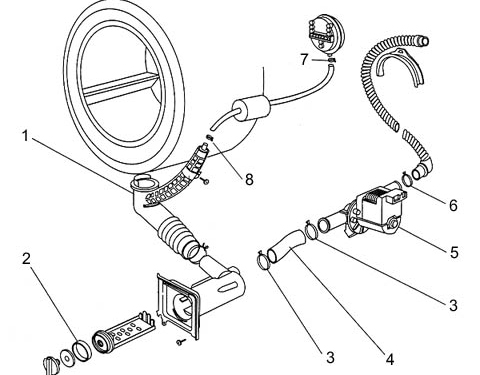 Other drain pumps other types only let liquid flow in one predetermined direction.
Other drain pumps other types only let liquid flow in one predetermined direction.
In these designs, special sealing sleeves are used to prevent the fluid from flowing by itself. These sleeves prevent water from entering the bearing. The shaft (rotor) in such a device will pass through the main collar sleeve, which will be equipped on both sides with corrugations and crimping of a special spring ring.
Rules of operation
If the pump for an automatic washing machine is properly cared for, then its service life will last an average of about 10 years.
In order that this period is not reduced, it is necessary:
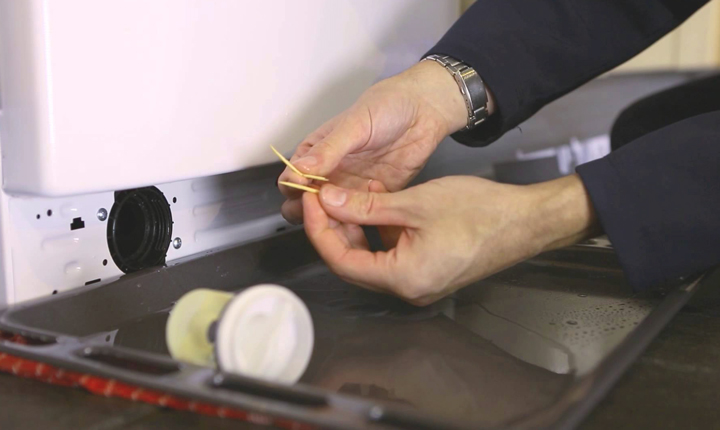 Provide the machine with clean water (it is necessary to check pockets in your clothes before washing for foreign objects and remove them, it is also better to remove pieces of dried dirt before you put the thing in the drum);
Provide the machine with clean water (it is necessary to check pockets in your clothes before washing for foreign objects and remove them, it is also better to remove pieces of dried dirt before you put the thing in the drum);- Check that the filters are working of the filters;
- Keep the drum free of limescale (use specific descalers for this);
- Completely empty the drum of water at the end of the washing process (wait until the water disappears from the tank to 100%).

